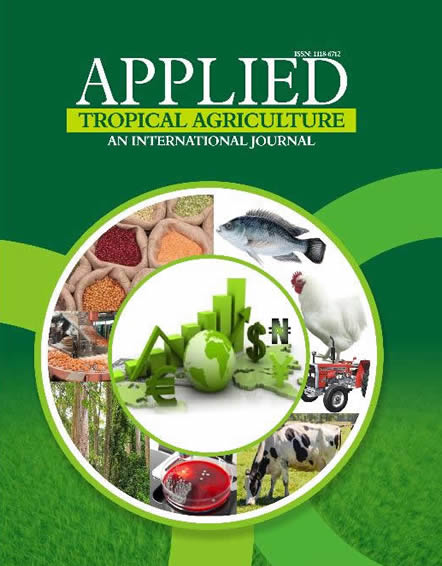This study was conducted to investigate the tree species diversity in two cities in Nigeria ascertain their biodiversity
conservation potentials. Data for this study were collected using both semi-structured questionnaire and inventory of tree
species in Abuja and Minna of Nigeria. The questionnaire was used to obtain information on the socio-economic and
environmental benefits of urban and peri-urban forests. Twenty respondents were purposefully selected in each urban and
peri-urban centres of Minna and Abuja, which translated to a total of eighty (80) questionnaires for this study.
Administration of questionnaires was done using snowball sampling; respondents were those who own tree(s) or who have
association(s) with tree(s). The biodiversity assessment entails complete enumeration of tree species in public
parks/garden, private gardens/home gardens, avenue/roadside trees, school grounds, public and private institutions and
any space with conglomerates of trees. In the study location, all trees with diameter at breast height (dbh) ≥ 10cm were
identified, dbh measured and their frequency taken. Data were analyzed using descriptive analysis, student’s T-test, oneway
ANOVA and correlation analysis. ArcGIS 10.3 software package was used to produce Normalized Difference
Vegetation Index (NDVI) map for this study. The tree species diversity assessment and questionnaire administration results
obtained were used to compute the tree species diversity indices, determine socio-economic and environmental importance
of trees in urban and peri-urban centres. A total of 27 families (27 in urban and 12 in peri-urban areas of Abuja; 17 in
urban and 9 in peri-urban areas of Minna) were encountered. The results of Shannon-Wiener diversity index were 3.56 and
2.24 in urban and peri-urban areas of Abuja, respectively as well as 3.08 in 2.34 in urban and peri-urban areas of Minna,
respectively while species evenness were 0.54 in urban and 0.42 in peri-urban area of Abuja as well as 0.54 in urban and
0.50 in peri-urban area of Minna. The benefits (food, edible fruits, vegetables, fuelwood, herbs, animal fodders, parks,
windbreak, pollution reduction, beautifications, recreation and event centres) derived by the people from urban and periurban
forests are indications that urban forest support the livelihood of the populace through the provision of food and
nutritional supplements, economic empowerment, social support and environmental sustainability. This study provides
baseline information for ecosystem management of urban forest tree species.
PAPER TITLE :TREE SPECIES DIVERSITY AND THEIR BENEFITS IN URBAN AND PERI-URBAN AREAS OF ABUJA AND MINNA, NIGERIA
APPLIED TROPICAL AGRICULTURE | VOLUME 21 NUMBER 3 2016
Paper Details
- Author(s) : Agbelade, A.D.1*, Onyekwelu, J.C.2 and Oyun, M.B.2
- Abstract:


